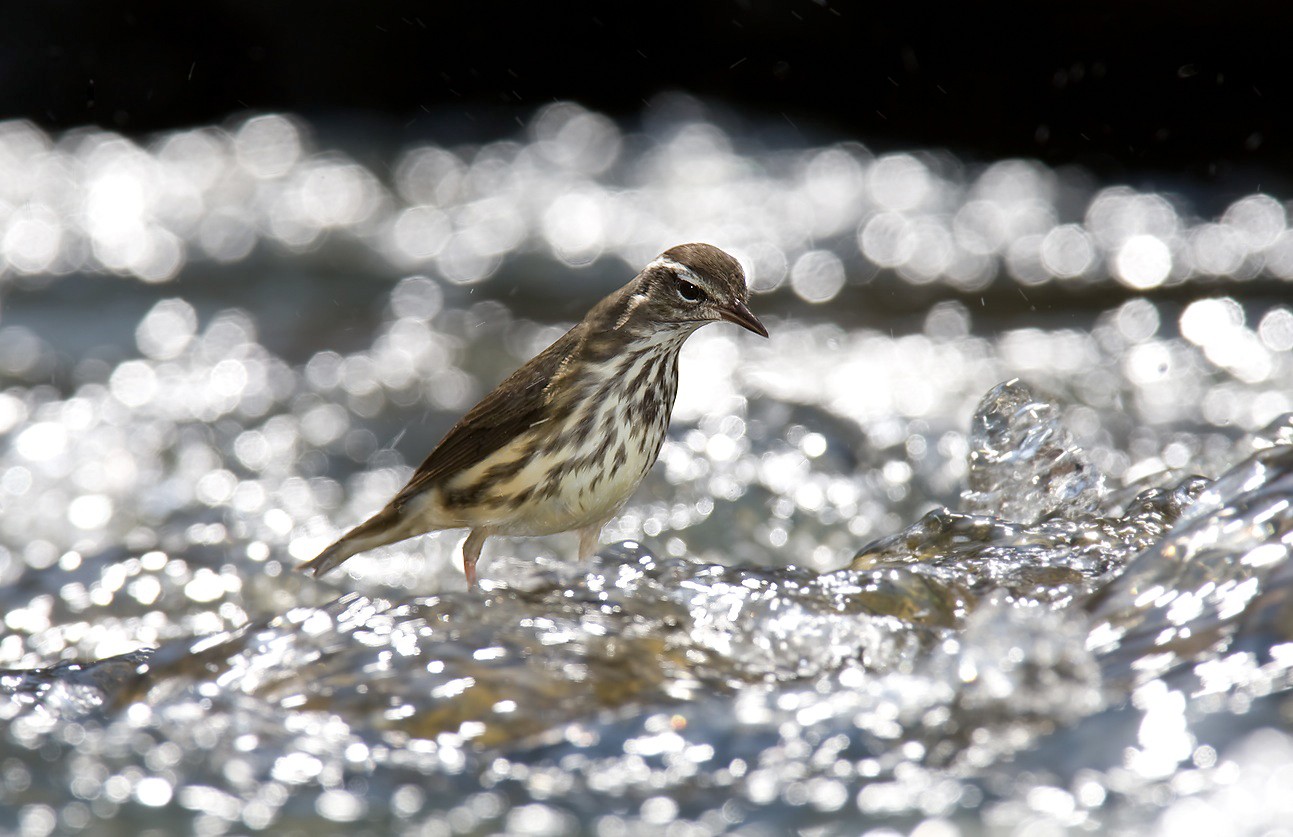Louisiana Waterthrush
A species of Waterthrushes Scientific name : Parkesia motacilla Genus : Waterthrushes
Louisiana Waterthrush, A species of Waterthrushes
Botanical name: Parkesia motacilla
Genus: Waterthrushes
Content
Description General Info
 Photo By William H. Majoros , used under CC-BY-SA-4.0 /Cropped and compressed from original
Photo By William H. Majoros , used under CC-BY-SA-4.0 /Cropped and compressed from original Description
The Louisiana waterthrush has a plain brown back and white underparts streaked with black. The flanks and undertail are buff. There is a strong white flared supercilium, and the legs are bright pink. All plumages are similar, but young birds have buff underparts rather than white. The main confusion species is the closely related northern waterthrush (Parkesia noveboracensis), which has white flanks and undertail, a striped throat, a slightly smaller bill, a shorter supercilium and duller pink legs. In a study of the two waterthrushes in Connecticut nesting grounds, the Louisiana waterthrush, at an average of 20.6 g (0.73 oz), was rather larger than the Northern, at an average of 16.2 g (0.57 oz). The Louisiana waterthrush is the largest species of wood warbler. It measures 14–17 cm (5.5–6.7 in) in length and spanning 21–25.4 cm (8.3–10.0 in) across the wings. The weight of adult birds can vary from 17.4 to 28 g (0.61 to 0.99 oz). Among standard measurements, the wing chord is 7.4 to 8.5 cm (2.9 to 3.3 in), the tail 4.4 to 5.4 cm (1.7 to 2.1 in), the bill is 1.2 to 1.5 cm (0.47 to 0.59 in) and the tarsus is 2 to 2.3 cm (0.79 to 0.91 in). The male's song is a musical, distinctive series of descending notes followed by a warble. The pitch of the beginning notes of the Louisiana's song usually descend, just as does the hilly stream that is its preferred habitat, whereas in the northern waterthrush the song does not vary in pitch as much. The call is a hard chink. Like the closely related northern waterthrush, the Louisiana waterthrush frequently bobs its tail. 
Size
15 cm (6 in)
Life Expectancy
8 years
Nest Placement
Ground
Clutch Size
2 - 6 eggs
Incubation Period
1 brood
Number of Broods
10 - 14 days
Feeding Habits
Louisiana Waterthrush predominantly consume aquatic and terrestrial insects, crustaceans, and small vertebrates near freshwater. They forage by jabbing or shifting leaves to uncover and catch prey like caddisflies, mayflies, beetles, crayfish, and earthworms, also employing hover-gleaning for flying insects. Their size allows them to consume larger prey compared to similar species.
Habitat
Louisiana Waterthrush is commonly found in mature deciduous or mixed forests, often in hilly areas near clear, perennial streams. Preferred environments include wooded ravines and swamps, with a particular affinity for brooks and cypress swamps. The species thrives at varying altitudes, generally avoiding young forests and clearcut regions. During winter migration, louisiana Waterthrush habituates fast-flowing streams in hilly regions across the West Indies, Central, and South America, rarely settling in lowland areas or mangrove forests.
Nest Behavior
Louisiana Waterthrush's males and females select the nest site together and both aid in construction. Nesting involves creating a cup nest foundation, occasionally with a leafy entranceway, and lining it with finer materials. Nest size varies with recess size.
Nest Characteristics
Louisiana Waterthrush's nest is often in streambank recesses, under logs, or in root tangles, usually on southern sides. It's constructed with plant stems, pine needles, wet and dry leaves, mud, rootlets, hair, and mosses, measuring around 6x4 inches externally and 3x2 inches internally.
Dite type
Insectivorous
General Info
Feeding Habits
Bird food type
Bird Feeder Type

Ground
Behavior
Louisiana Waterthrush exhibit a dynamic lifestyle, predominantly hunting along stream edges. They engage in energetic foraging, nimbly navigating through debris for aquatic insects and small vertebrates without fully submerging. Wading into water, they adeptly use their bills to catch prey, akin to diminutive herons. Territorial by nature, males defend stream segments of varying lengths with some returning annually to former mates. Courtship is characterized by synchronized flights and the exchange of distinct 'zizz' calls. To delineate territory and deter rivals, louisiana Waterthrush perform both vocal and physical displays, showcasing their vivid mouth lining and sharp-winged postures. Even in wintering grounds, these birds maintain a staunch territorial stance, although they coexist peacefully with closely related species.
Species Status
Not globally threatened.
Scientific Classification
Phylum
Chordates Class
Birds Order
Perching birds Family
New world warblers Genus
Waterthrushes Species
Louisiana Waterthrush